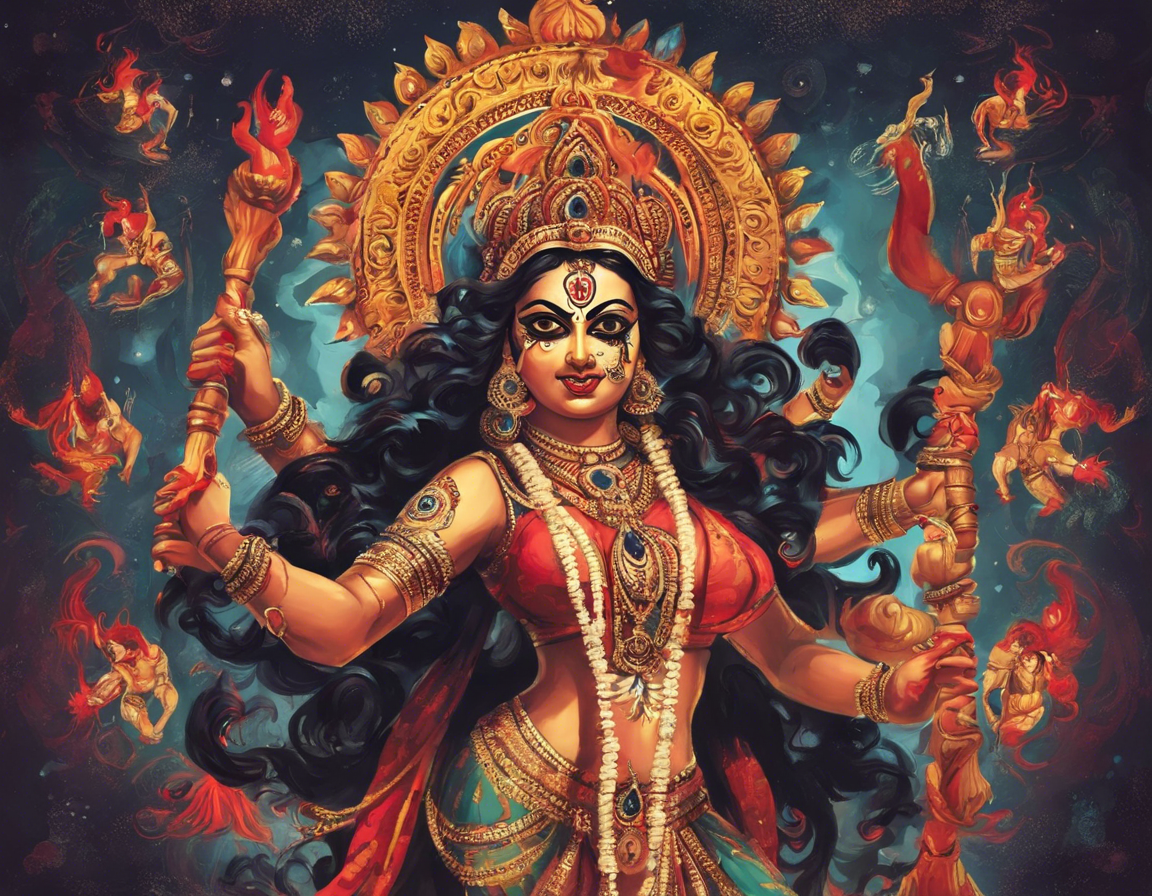Kali Puja is a significant festival celebrated mainly in the eastern parts of India, particularly in West Bengal, Odisha, and Assam. It is a grand celebration of the Goddess Kali, who is considered a symbol of power and destruction. The festival usually falls in the month of October or November, during the New Moon night, known as Amavasya. Kali Puja is a time when devotees gather to worship the fierce yet benevolent deity, seeking her blessings for protection, prosperity, and well-being. Let’s delve deeper into the customs, rituals, and significance of this vibrant and powerful festival.
Origins and Significance of Kali Puja
Kali, often depicted with a dark complexion, wild hair, and a garland of skulls, represents destruction of ignorance and ego. She is also seen as a force of time, the ultimate reality of birth and death. Kali Puja is considered highly auspicious as it is believed that during this time, the Goddess is most receptive to the prayers and offerings of her devotees.
Customs and Rituals of Kali Puja
- Idol Preparation: The idol of Goddess Kali is crafted with clay, often portraying her standing over Lord Shiva and carrying various weapons and symbols.
- Night Celebrations: Kali Puja is mainly observed during the night, with elaborate rituals, prayers, and offerings made to the Goddess.
- Tantric Practices: Some devotees follow tantric rituals during Kali Puja, involving the chanting of mantras and offering of blood sacrifices, although this practice is becoming increasingly rare.
- Feasting and Merriment: Like many Indian festivals, Kali Puja also involves feasting on traditional sweets and delicacies, exchanging gifts, and enjoying cultural performances.
Kali Puja Celebrations Worldwide
While Kali Puja is primarily celebrated in India, particularly in West Bengal, it has gained popularity in other parts of the world with a significant Bengali and Indian diaspora. Cities like New York, London, and Singapore host Kali Puja celebrations, bringing together communities to worship the Goddess and celebrate their culture.
FAQs about Kali Puja
1. What is the significance of Kali Puja?
Kali Puja celebrates the victory of good over evil and the power of the divine mother to protect her devotees from harm.
2. How is Kali Puja different from Durga Puja?
While both festivals celebrate powerful forms of the Goddess, Kali Puja focuses specifically on the fierce aspect of Goddess Kali, whereas Durga Puja honors Goddess Durga in her benevolent form.
3. Can anyone participate in Kali Puja celebrations?
Yes, Kali Puja is a festival open to all, and everyone is welcome to join the celebrations, offer prayers, and seek the blessings of the Goddess.
4. Are there any specific rituals I need to follow during Kali Puja?
While there are traditional customs and rituals associated with Kali Puja, the most important aspect is devotion and sincerity in your prayers to the Goddess.
5. What are some traditional dishes prepared during Kali Puja?
Sweets like Nolen Gurer Sandesh (date palm jaggery sweets), Kheer (rice pudding), and savory snacks like Echorer Torkari (raw jackfruit curry) are commonly prepared during Kali Puja.
Kali Puja is not just a religious festival but a cultural extravaganza that brings communities together in celebration and devotion. The vibrancy, rituals, and customs associated with the festival make it a unique and unforgettable experience for those who partake in it. Whether you are a devout follower of Goddess Kali or simply curious about Indian traditions and customs, experiencing Kali Puja can offer you insights into the rich tapestry of Indian culture and spirituality.
